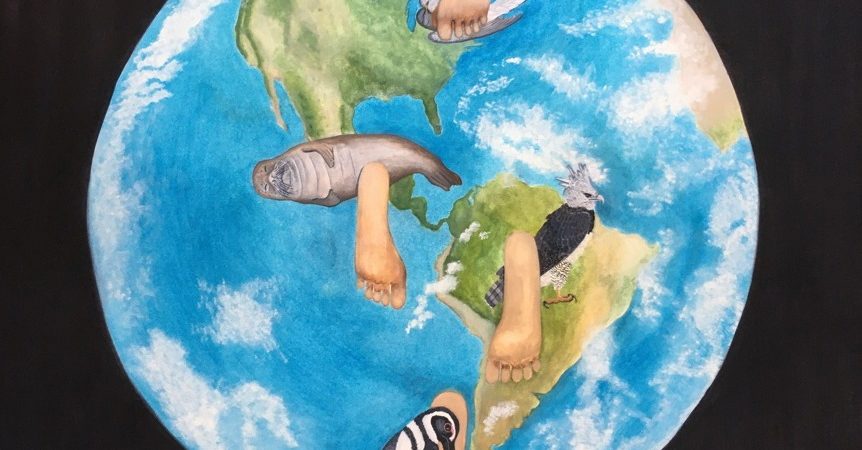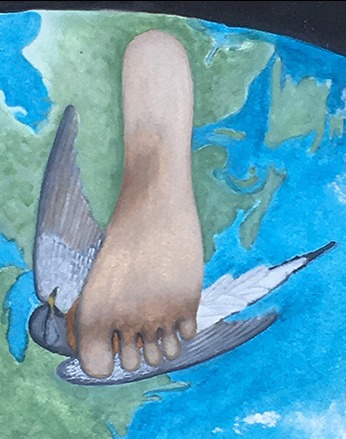 Passenger Pigeon (Ectopistes migratorius): a long-tailed North American pigeon that has been extinct since 1914. Its name is from the French word, ‘passager’ meaning ‘passing by’, referring to the birds’ migratory behavior when they assembled into mile-wide flocks of hundreds of thousands to hundreds of millions that could be passing by for hours or days. Railroad construction in the upper Middle West after the U.S. Civil War (1861-65) provided market hunters a conduit for shipping these easily slaughtered birds to East coast consumers. In less than 40 years, overhunting and shrinking colony size eliminated what might have been the most numerous bird on Earth.
Passenger Pigeon (Ectopistes migratorius): a long-tailed North American pigeon that has been extinct since 1914. Its name is from the French word, ‘passager’ meaning ‘passing by’, referring to the birds’ migratory behavior when they assembled into mile-wide flocks of hundreds of thousands to hundreds of millions that could be passing by for hours or days. Railroad construction in the upper Middle West after the U.S. Civil War (1861-65) provided market hunters a conduit for shipping these easily slaughtered birds to East coast consumers. In less than 40 years, overhunting and shrinking colony size eliminated what might have been the most numerous bird on Earth.
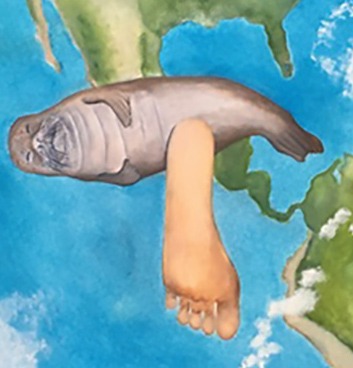 Caribbean Monk Seal (Monachus tropicalis): a 400-pound carnivore that was first reported during the second voyage of Columbus in 1494 (when eight were killed for meat) and last seen in 1952. Overhunting killed off this little-known monk seal subspecies whose fat was used for lubrication, coating the bottom of boats, and as lamp and cooking oil. It was also valued, although less so, for its meat and skin. The other two monk seal subspecies, the Hawaiian and Mediterranean, survive.
Caribbean Monk Seal (Monachus tropicalis): a 400-pound carnivore that was first reported during the second voyage of Columbus in 1494 (when eight were killed for meat) and last seen in 1952. Overhunting killed off this little-known monk seal subspecies whose fat was used for lubrication, coating the bottom of boats, and as lamp and cooking oil. It was also valued, although less so, for its meat and skin. The other two monk seal subspecies, the Hawaiian and Mediterranean, survive.
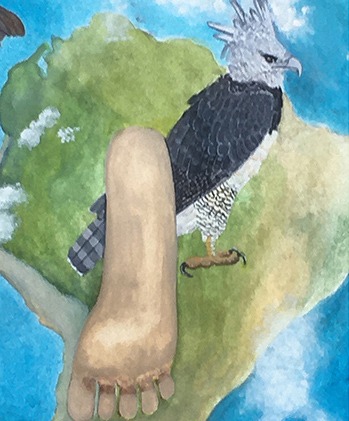 Harpy Eagle (Harpia harpyja): an enormous near-threatened Neotropical avian predator, with a five-to-seven foot wingspan, claw large enough to wrap around your fist, and–like owls–a mobile feathered facial disk that can direct sound to its ears. Harpies are nearly extinct in Mexico and rare through Central and South America, as far south as Argentina, with losses primarily from habitat destruction. These eagles require an area of about 39 squire miles (100 km2) and, of course, sufficient prey. They are most common in Brazil.
Harpy Eagle (Harpia harpyja): an enormous near-threatened Neotropical avian predator, with a five-to-seven foot wingspan, claw large enough to wrap around your fist, and–like owls–a mobile feathered facial disk that can direct sound to its ears. Harpies are nearly extinct in Mexico and rare through Central and South America, as far south as Argentina, with losses primarily from habitat destruction. These eagles require an area of about 39 squire miles (100 km2) and, of course, sufficient prey. They are most common in Brazil.
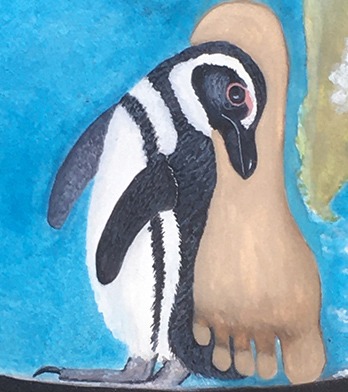 Magellanic Penguin (Spheniscus magellanicus): a two-foot high South American flightless seabird that is the most numerous of the four-banded penguins known as ‘jack-ass penguins’ from their loud calls that resemble braying donkeys. A 2018 study of the Tombo peninsula penguin colony in Argentina found that climate change is intensifying rainstorms and bouts of extreme heat that are killing chicks. This colony of Magellanic Penguins is the world’s largest.
Magellanic Penguin (Spheniscus magellanicus): a two-foot high South American flightless seabird that is the most numerous of the four-banded penguins known as ‘jack-ass penguins’ from their loud calls that resemble braying donkeys. A 2018 study of the Tombo peninsula penguin colony in Argentina found that climate change is intensifying rainstorms and bouts of extreme heat that are killing chicks. This colony of Magellanic Penguins is the world’s largest.
Virtually none of us contributed to the top footprint. Anyone over the age of 68 may have played a part in making the second footprint. All of us can avoid contributing further to the remaining two.
*Ecological footprints refer to our impact on the environment
